|
7/29/2011 0 Comments India: Land of the Rain or ShineIt’s been over a week in monsoon-ridden Mumbai. The days have passed by at their own pace, as extreme and free-falling as the two-hour downpours scattered throughout the afternoon and night, torrents of rain falling from a white sky. We stay at a YMCA about forty-five minutes drive away from the airport. Similar to a hostel, this YMCA is located at the south end of Mumbai, considered the well-off part of the city. Near the famous Gateway of India that looks out into the sea and even closer to the unfortunately infamous Taj Hotel and Leopold Café (hot-spot tourist areas that were terrorist targets a few years back), the YMCA is at the center of bustling Colaba. Every morning, my roommate, Zoey, and I awake to the sound of a sharp knock on the door. One of us stumbles to take the pot of chai and the teacups from the porter in the doorway. The humidity in the hallways always hits us in the faces like a soft hammer. Sometimes, the rain outside is a deluge and we hear it thudding. Sometimes we are lucky, and it is only a dripping of moisture from the air. Chai. Sweet, creamy, and a hint of English breakfast—it’s like no other tea I’ve ever had. Even better is dipping butter cookies into the steaming liquid, biting in and tasting that mix of flavorful-soft-crispy… ahh, it’s so delicious. Chai was my first taste of India, early my first morning in Mumbai, and I love it. (I’ve been on a crazed search to find the recipe, but no one seems to know despite the commonplace nature of the hot, milky drink.) 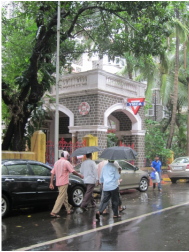 The YMCA hostel where I stayed Outside of the YMCA, one hears the scraggly honks of compact taxis, driver seat on the left, the deeper screeches of breaks, shouts from a man selling T-shirts for 100 rupees—good price guaranteed!— the chattering of shopkeepers and the soft padding of skinny-ribbed dogs. Then the people, so many bodies pressed against each other, some wearing saris or kurtis, the scarves and fabric smoothly brushing by, the men in simple pants, flip-flops and untucked, button-down shirts, striped or layered in swirl patterns, younger Indians in modern clothing—jeans, T-shirts, heels—the policemen with their grey-green uniforms and brimmed hats. The smells, too, are different, wafting urine, diesel fuel, rain. One of the most difficult things in India is crossing the street. India’s traffic amazes me—it’s a rush, a rush of cars, of people, the honks filling the air, the wheels turning, the cars jerking forward, rushing, rushing, braking. At a crosswalk, the white lines and the lit-up green stick figure—go!— at the other side are only a 70% guarantee that you will get across the concrete without a car nearly running you over, honking in reprimand. Once, I crossed to the middle of a street and was caught at the center as two large buses rattled only inches in front of and behind me. I love how in India, taxi drivers will talk to each other through unrolled windows. After I hail a cab, the driver will look out of the passenger window at me, raise his eyebrows, and perform a perfunctory bobble of the head. “YMCA Colaba?” or “St. Xavier’s College?” I request. He will inevitably carry out the same dip of the head, not quite a nod, not quite a shake (what we call the “Indian head bobble”) whether or not he knows the place. If he does not know, the driver will hunt down another driver, drive dangerously close to the other car, give a lean honk, and ask where the place is while simultaneously doing the inescapable head bobble—it is intervehicle communication. Herein lies the warmhearted, generous spirit that I’ve come to encounter in India. If approached, most Indians I’ve met in Mumbai are more than willing to help out, and the students from St. Xavier’s College, where our program is held, are especially welcoming and friendly. One of the girls even invited Zoey and me to her home in South Mumbai for dinner and a sleepover. Yet, stray dogs wander the mud-infested streets and small, barefooted children put their fingers to their lips in silent pleas for food. Walking down Colaba Causeway, one steps over and around split-level cracks in the sidewalk, homeless people’s knobby legs, broken palm branches, and still-bubbly collisions of spit against cement. Natives are desensitized to the suffering around them, for to feel for the poor is to be constantly distraught. Everywhere, they stare openly at outsiders, and some even creepily take photos of us with their cell phones as if we don’t notice. Poverty lies in the same streets as immense wealth; success and failure dwell side by side.
There has been no other place I’ve seen that is so full of extremes.
0 Comments
7/24/2011 0 Comments From Synagogue to Church to TempleBehind the counter, there was a shelf in the hole-in-the-wall cybercafé we found. I noticed it as I handed my passport to a clerk in order to confirm my identity and therefore gain access to the precious resource of connectivity. Upon the simple wood ledge was a bronze cross with Jesus hanging limply off of it and next to that, Shiva, a Hindu god. I was fascinated. The rest of Mumbai is no different. Today we toured the south end of Mumbai with Nathaniel, a Jew with the dark skin and facial features of a purebred Indian. He took us to two synagogues, both painted a beautiful baby blue with white edging, inside and out. We gazed in wonder at the brightly lit space, benches circling a lifted stage from which prayers from the Torah would be read, as the air whirled around us from fans that hung from a high, cathedral-like ceiling. Behind a light-blue silk curtain stitched with Hebrew letters, was the sacred ark. One hundred rupees for one picture. By a major road, a church sign in bold black letters proclaimed the lifting power of Jesus Christ. Next to it, a small stone church stood, the rest of Mumbai clattering busily about it. Later in the tour, we entered a Jain temple, leaving our shoes by the door. Stepping lightly, bare-footed, we entered the ringing, chanting area, the smell of incense wafting in the tropical air. Flowers were strewn by the feet of statues featuring images of wise sages and a few Jains were kneeling down, palms pressed tightly together, a small platform covered in rice grains shaped into miniature backwards swastikas before them. A religion that focuses on the damning cycle of reincarnation, Jainism seeks for complete respect and humility towards all living things, including bacteria and microbes. They are strict vegetarians and moreover, refuse root vegetables such as onions, garlic and potatoes for fear of disturbing the smallest particles of life that exist underground. That fly flicking the air with its wings nearby? A Jain would be horrified if you even attempted to swat at it. Apparently Barack Obama specifically visited the Jain temple that we walked into today. Similarly, our current president visited the Mumbai home of Mahatma Gandhi (who is called Gandhiji, or “respected Gandhi” by the Indians) not too long ago. We stepped foot into the same place, the residence for ten years of a devoutly Hindu man who advocated for peace among all religions and peoples. Gandhi alone may be the reason for the tremendous diversity and tolerance of religions that I have
come to find here. His circle-rimmed eyes smile off of every rupee note. The spirit and ideals of this man who lived for the eternal yet sought to bring equality to the present is such a bold contrast to the narrow-minded, violent extremists who have bombed Mumbai seven or eight times in the past ten years. Talking to Sukanya, a short, curly-haired third-year at St. Xavier’s, about terrorism in Mumbai, I was amazed at this statistic. She also blatantly commented on how Mumbai went on with its daily routine the day after the most recent attack (three crowded areas of the city were viciously bombed just a week before our trip). Rather than attributing it to resilience or bravery as many foreign newspapers had, Sukanya said that returning to normal quickly was done out of pure necessity—to stop work, even for a terrorist attack, would have placed the entire economy of the city out of whack. “We have become desensitized,” she admitted to me. “You can’t constantly worry. It’s impossible to live like that. After an attack, we call our loved ones to make sure they are safe and then go on with our lives. There is nothing else we can do.” 7/19/2011 2 Comments Oh, the Places You’ll Go!I used to think that scientific research only took place at shadowy workbenches occupied by a single goggle-wearing figure wrapped in a white coat. Enclosed in a small, windowless room, the scientist was, in my mind, literally a prisoner of his work. Of course, I couldn’t have been more wrong. This here is the Northwest Labs, where I spent five weeks at the beginning of this summer working in a molecular biology laboratory. An enormous glass-walled building, it is comprised of four floors above the ground and four below. It functions as both a teaching and a laboratory space and is extraordinarily spacious and well-lit. There are many comfortable social spaces scattered about the building, such as the popular "Red Couches." Additionally, every Friday, the FAS Center for Systems Biology has its “Happy Hour” where free food and drink is served, and members from different laboratories come together to chat, fill their bellies, and blow off some steam. And who says science geeks can’t be athletic? Currently, a bunch of guys from my lab are participating in the MCB summer volleyball tournament called the Rhino League. Named after the two iron-clad rhinos that guard the front doors of the Bio Labs, this summer-long tourney is no walk through the Yard. Evidence of its intensity: my PI (Principal Investigator) from last summer sacrificed his shoulder to save a ball and sat out for the rest of the tournament with a sprain. Needless to say, the hermit scientist of my imagination would have a hard time living here. My current lab is composed of three MCB graduate students, three postdoctoral fellows, and two undergraduates. Led by Vlad Denic, an assistant professor of MCB and our PI, the laboratory studies various membrane-associated processes. I’ll talk more about the specifics of my own research in a later blog post. For now though, let’s talk about traveling. Science is a lot about discovering—discovering processes and mechanisms, uncovering truths once hidden from us. Yet, the world is so vast and so complex that tackling such undertakings on one’s own can be overwhelming and draining. This is where science meetings come in. At these conferences, travel happens in two ways. There’s the pleasure of finding oneself in a physically new place and then the even more exhilarating feeling of being able to roam the depth and breadth of one’s scientific field. This summer, I attended my first science meeting, located in Norman, Oklahoma: Evolution 2011. As a rising junior, I was part of the group of 25 college students who were given travel fellowships to travel to OK and experience Evolution. Called Undergraduate Diversity Students, we were definitely just that, hailing from as far as Alaska, Hawaii, and Peru and representing at least seven different ethnicities. As part of our participation in Evolution, the Undergraduate Diversity students had to present their own projects at one of the night poster sessions. For me, this was definitely one of the highlights of the five-day conference. Explaining my research to others, talking to scientists in the field who actually recognized my findings, engaging with professors in the evolutionary biology field— it was so exciting to feel like I was a part of the research community! Additionally, we were each assigned mentors—current graduate students, postdocs, or professors—to share with us their lives and to encourage us to pursue a career in science. Science is no longer a lonely calling. The places you’ll go, the things you’ll see—the world is wide open! When else would I ever get the chance to visit Oklahoma? :) Sidenote: I would highly recommend applying for the Undergraduate Diversity fellowship! As far as I know, the NSF funds college students at various conferences, Evolution being only one of the many out there. 7/9/2011 5 Comments Crash Course on Global HealthImpact Warning: Proceed with caution. You could say that I crashed into this program, eyes forward and hands outstretched, anticipating a fall. Some people plan their summers months ahead of time, carefully mapping out every activity. I hate to admit that I was one of those people. I started thinking about Summer 2011 around January. Yet, as usual, things didn’t pan out quite as I expected. Life bumps you off your chosen path, sends you rejection letters, and suddenly you’re driving on the wrong side of the road. The Albert Einstein College of Medicine is located in the Bronx, NY. Composed of elegant, glass-paneled research facilities, a hospital, and multiple residential halls, it is also home to several graduate schools including the Ferkauf Graduate School of Psychology. This is the building where my course, the Summer Institute in Global Health, was held. The two-week didactic seminar series invited professors in public health, neurology, and medicine to speak on topics that ranged from “Research Methods and Design” to “Ethics and Global Health.”
I am a wet-lab researcher by experience. Having worked with pipettes and centrifuges since high school, I’ve cultured human neuroblastoma, performed flow cytometry, smelled daily the faintly bread-like smell of yeast, run PCRs and Western blots, the list goes on. Yet, research on human beings? Data generated from surveys? N values in the thousands? Even the vocabulary of the public health field is entirely foreign to me. Through the course, I’ve been exposed to studies with acronyms such as CBPR (Community-Based Participatory Research) and have learned the subtle differences between words like “prevalence” and “incidence.” Over and over again, the course has stressed the significance of social determinants in the spread of human epidemics. Factors such as environment and societal expectations (“norms”) are major reasons as to why so many human diseases prevail despite the availability of effective drugs and treatments. In total, there are eight participants in the course. Interestingly enough, all of us are female. It begs the question: why are so many women going into the field of public health? To be honest, coming from a hard science background, I found the social sciences to be comparatively intuitive and easy to grasp. That being said, the problems that public and global health officials have to deal with are, for lack of a better word, overwhelming. India, alone, supports 1.2 billion people on land that is a third the size of the United States. There, the number of people with communicable and non-communicable diseases (examples include HIV/AIDS, malaria, TB, cardiovascular disease, and obesity) is rising rapidly. It takes heart, sacrifice, and cultural open-mindedness to even begin to attack the root of such problems. Money is sparse in such fields, and so, advocates need to be driven by real passion. And it seems that in the field of global health, women are the ones stepping up to the plate. This is not to exclude all the guys out there with a drive to battle epidemics. With the onset of globalization, global health seems to be the next hot field for many motivated college grads. Countless non-profits go abroad to support developing and Third World countries. Research can now be a multi-national endeavor. Yet, the issues to be faced are on a level of complexity and scale that personally makes me quake in my shoes. If I’ve learned anything over these past two weeks, it’s that the problem of bringing health to people is so much deeper than having the right medication. Promoting health and preventing disease is one of the hardest issues humankind faces, and it is, in this way, a truly worthy cause. This summer course has left me with a strange and incredible feeling, awe mixed with apprehension and determination. Of course, it’s all amplified by the fact that I leave for India in five days (?!). You know, life can throw its curveballs, but actually, driving on the wrong side of the road isn’t too bad. Especially if you find yourself driving left-handed in India. |
What's HotGet the DigestAbout the Blogger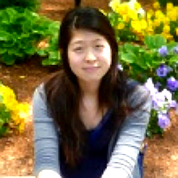
Stephanie M. Wang is a Chemical and Physical Biology major at Harvard College, Class of 2013. She is a pre-med who just can't get enough of the hard sciences. She loves learning new things, frisbee, poetry, every kind of apple, people. Stephanie blogs regularly for the Scientista Foundation: Find her blog here!
More From Stephanie |
The Scientista Foundation, Inc. All Rights Reserved © 2011-2021 | Based in NY | contact@scientistafoundation.org
The Network for Pre-Professional Women in Science and Engineering
The Scientista Foundation is a registered 501(c)(3) -- Donate!
The Network for Pre-Professional Women in Science and Engineering
The Scientista Foundation is a registered 501(c)(3) -- Donate!


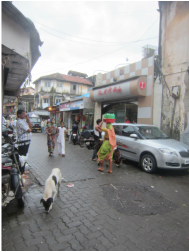
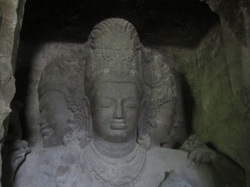
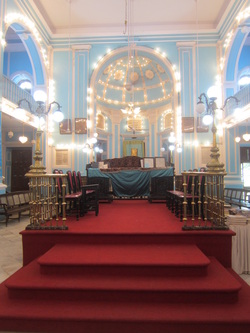
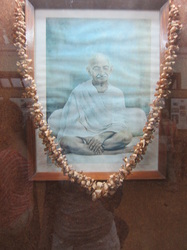
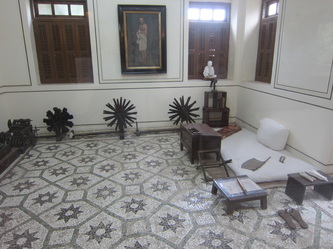
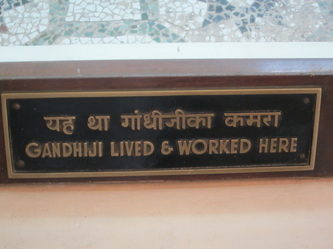
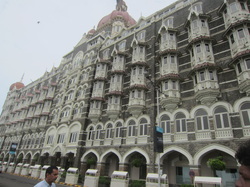
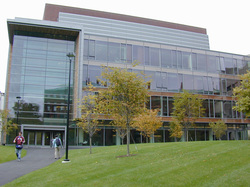
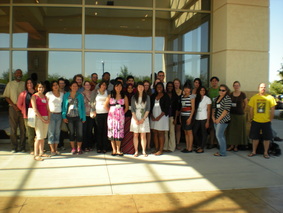
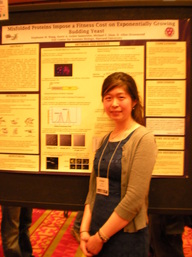
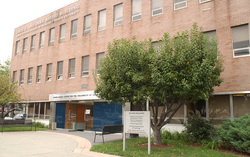





 RSS Feed
RSS Feed